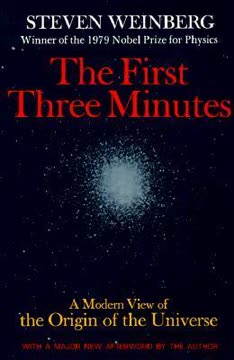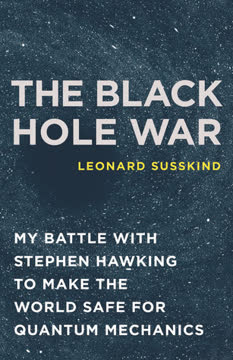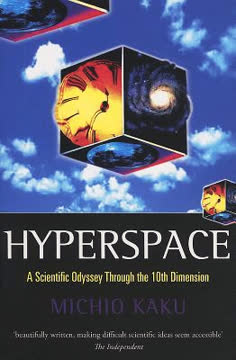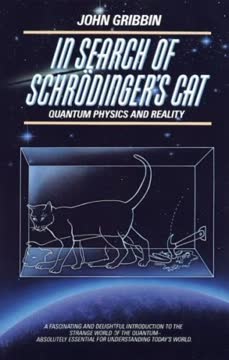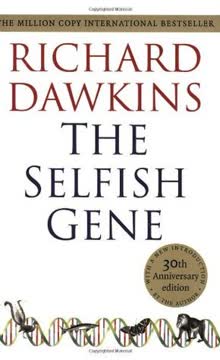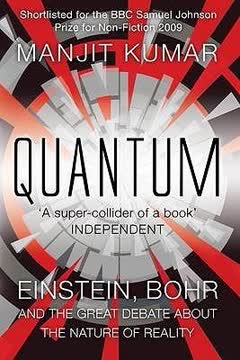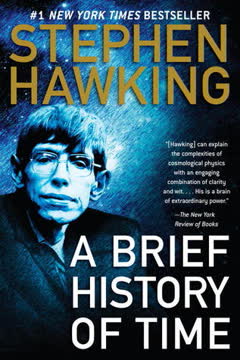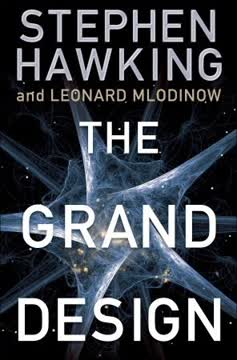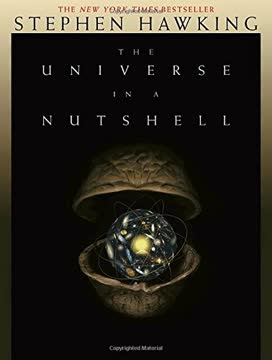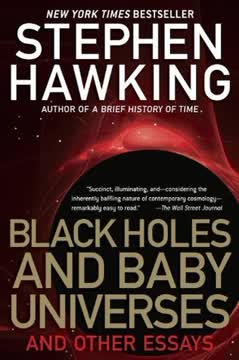Punti chiave
1. Dalle Miti Antichi alla Cosmologia Moderna: La Nostra Comprensione in Evoluzione dell'Universo
Ci troviamo in un mondo sconcertante. Vogliamo dare un senso a ciò che vediamo intorno a noi e chiederci: Qual è la natura dell'universo? Qual è il nostro posto in esso, e da dove provengono esso e noi? Perché è così com'è?
Spiegazioni antiche: Gli esseri umani hanno a lungo cercato di comprendere l'universo, inizialmente attraverso miti e credenze religiose. Queste prime teorie spesso coinvolgevano spiriti o dei che controllavano i fenomeni naturali.
Rivoluzione scientifica: Il metodo scientifico ha gradualmente sostituito le spiegazioni mitiche, portando a modelli più accurati dell'universo:
- Aristotele e Tolomeo: Universo centrato sulla Terra
- Copernico e Galileo: Sistema solare centrato sul Sole
- Newton: Leggi del moto e della gravità
- Einstein: Teoria della relatività
Cosmologia moderna: Oggi, abbiamo una visione dell'universo enormemente ampliata, che comprende miliardi di galassie e si estende per miliardi di anni luce. La nostra comprensione continua a evolversi attraverso l'osservazione, la sperimentazione e il lavoro teorico.
2. La Relatività di Einstein: Rivoluzionare i Concetti di Spazio, Tempo e Gravità
La scoperta che la velocità della luce appariva la stessa per ogni osservatore, indipendentemente da come si muovesse, ha portato alla teoria della relatività e all'abbandono dell'idea che esistesse un tempo assoluto unico.
Relatività speciale: La teoria del 1905 di Einstein ha introdotto concetti rivoluzionari:
- La velocità della luce è costante per tutti gli osservatori
- Dilatazione del tempo: Gli orologi in movimento scorrono più lentamente
- Contrazione della lunghezza: Gli oggetti in movimento appaiono più corti
- Equivalenza massa-energia: E = mc²
Relatività generale: La teoria del 1915 di Einstein descrive la gravità come la curvatura dello spaziotempo:
- Gli oggetti massicci deformano il tessuto dello spaziotempo
- I pianeti orbitano attorno al Sole seguendo lo spaziotempo curvato
- Dilatazione gravitazionale del tempo: Il tempo scorre più lentamente in campi gravitazionali più forti
- Fenomeni previsti: onde gravitazionali, buchi neri e l'espansione dell'universo
3. Meccanica Quantistica: Svelare la Natura Probabilistica della Realtà alle Scale più Piccole
Il principio di indeterminazione ha segnato la fine del sogno di Laplace di una teoria della scienza, un modello dell'universo che sarebbe completamente deterministico.
Rivoluzione quantistica: All'inizio del XX secolo, gli scienziati scoprirono che le leggi classiche della fisica si rompono a livello atomico.
Concetti chiave della meccanica quantistica:
- Dualità onda-particella: Le particelle possono comportarsi come onde e viceversa
- Principio di indeterminazione: Non si può conoscere simultaneamente la posizione esatta e la quantità di moto di una particella
- Natura probabilistica: Si può solo prevedere la probabilità degli esiti, non risultati definiti
- Sovrapposizione quantistica: Le particelle possono esistere in più stati contemporaneamente
- Entanglement: Le particelle possono essere correlate su grandi distanze
Implicazioni: La meccanica quantistica sfida la nostra comprensione intuitiva della realtà, suggerendo un universo fondamentalmente probabilistico alle scale più piccole.
4. La Teoria del Big Bang: Tracciare l'Origine e l'Evoluzione del Nostro Universo in Espansione
Ora sappiamo che la nostra galassia è solo una delle centinaia di migliaia di milioni che possono essere viste usando telescopi moderni, ciascuna galassia contenente a sua volta centinaia di migliaia di milioni di stelle.
Evidenze per il Big Bang:
- Espansione dell'universo (Legge di Hubble)
- Radiazione cosmica di fondo a microonde
- Abbondanza di elementi leggeri (idrogeno ed elio)
Cronologia dell'universo:
- 0 secondi: Big Bang
- 10⁻⁴³ secondi: Era di Planck (gravità quantistica)
- 10⁻³⁵ secondi: Periodo inflazionario
- 3 minuti: Inizio della nucleosintesi
- 380.000 anni: Formazione degli atomi (ricombinazione)
- 400 milioni di anni: Formazione delle prime stelle e galassie
- 13,8 miliardi di anni: Giorni nostri
Domande in sospeso: Materia oscura, energia oscura e il destino ultimo dell'universo continuano a sfidare la nostra comprensione dell'evoluzione cosmica.
5. Buchi Neri: Fenomeni Cosmici Estremi Dove la Fisica si Rompe
I buchi neri non sono affatto neri: brillano come un corpo caldo, e più sono piccoli, più brillano.
Formazione: I buchi neri si formano quando stelle massicce collassano o galassie collidono, creando regioni dove la gravità è così forte che nulla può sfuggire.
Proprietà chiave dei buchi neri:
- Orizzonte degli eventi: Punto di non ritorno per luce e materia
- Singolarità: Punto infinitamente denso al centro
- Radiazione di Hawking: Emissione teorica di particelle, che causa l'evaporazione lenta dei buchi neri
- Dilatazione del tempo: Il tempo rallenta drasticamente vicino all'orizzonte degli eventi
Significato: I buchi neri sfidano la nostra comprensione della fisica, poiché la relatività generale e la meccanica quantistica si rompono nel descrivere le loro proprietà.
6. La Freccia del Tempo: Esplorare Perché Viviamo il Tempo in una Direzione
L'aumento del disordine o entropia è ciò che distingue il passato dal futuro, dando una direzione al tempo.
Freccia del tempo termodinamica:
- Seconda legge della termodinamica: L'entropia (disordine) aumenta nel tempo
- Spiega perché possiamo ricordare il passato ma non il futuro
- Collegata all'espansione dell'universo
Altre frecce del tempo:
- Psicologica: Percepiamo il tempo come un flusso dal passato al futuro
- Cosmologica: L'universo si espande piuttosto che contrarsi
Implicazioni: La freccia del tempo solleva domande sulla natura della causalità, del libero arbitrio e della possibilità di viaggiare nel tempo.
7. Unificare la Fisica: La Ricerca Continua di una Teoria del Tutto
Se troviamo un insieme completo di leggi fondamentali, ci sarà ancora negli anni a venire il compito intellettualmente stimolante di sviluppare metodi di approssimazione migliori in modo da poter fare previsioni utili sugli esiti probabili in situazioni complesse e realistiche.
Stato attuale della fisica:
- Modello Standard: Descrive particelle fondamentali e forze (eccetto la gravità)
- Relatività Generale: Descrive la gravità e la struttura su larga scala dell'universo
Tentativi di unificazione:
- Teoria delle stringhe: Propone piccole stringhe vibranti come blocchi fondamentali
- M-teoria: Estende la teoria delle stringhe per includere dimensioni multiple
- Gravità quantistica a loop: Tenta di conciliare la meccanica quantistica con la relatività generale
Sfide: Sviluppare una teoria quantistica della gravità e spiegare fenomeni come la materia oscura e l'energia oscura rimangono obiettivi principali nella fisica.
8. Il Principio Antropico: Perché l'Universo è Com'è?
Il principio antropico debole afferma che in un universo che è grande o infinito nello spazio e/o nel tempo, le condizioni necessarie per lo sviluppo della vita intelligente saranno soddisfatte solo in certe regioni limitate nello spazio e nel tempo.
Problema del fine-tuning: Molte costanti fondamentali della natura sembrano precisamente regolate per permettere l'esistenza della vita.
Possibili spiegazioni:
- Caso: Siamo stati fortunati nel nostro universo
- Progetto: Un creatore ha regolato l'universo per la vita
- Multiverso: Il nostro universo è uno dei tanti, ciascuno con proprietà diverse
Implicazioni: Il principio antropico solleva questioni filosofiche sulla natura della spiegazione scientifica e sul ruolo degli osservatori nell'universo.
9. Il Futuro della Fisica: Cosa Ci Riserva il Domani
Anche se scopriamo una teoria unificata completa, ciò non significherebbe che saremmo in grado di prevedere eventi in generale, per due ragioni. La prima è la limitazione che il principio di indeterminazione della meccanica quantistica impone ai nostri poteri di previsione. Non c'è nulla che possiamo fare per aggirarlo.
Aree di ricerca in corso:
- Materia oscura ed energia oscura
- Calcolo e informazione quantistica
- Onde gravitazionali
- Fisica delle particelle oltre il Modello Standard
Sfide tecnologiche:
- Costruire acceleratori di particelle più potenti
- Sviluppare rivelatori più sensibili per fenomeni rari
- Avanzare nei metodi computazionali per simulazioni complesse
Implicazioni filosofiche:
- Limiti della conoscenza: Avremo mai una comprensione completa dell'universo?
- Natura della realtà: Come si relazionano le nostre teorie alla natura sottostante dell'esistenza?
- Ruolo della coscienza: L'osservatore gioca un ruolo fondamentale nella meccanica quantistica?
Ultimo aggiornamento:
FAQ
What's "A Briefer History of Time" about?
- Overview: "A Briefer History of Time" by Stephen Hawking and Leonard Mlodinow is a simplified version of Hawking's earlier work, "A Brief History of Time." It aims to make complex concepts in cosmology more accessible to a broader audience.
- Content Focus: The book covers fundamental questions about the universe, such as its origin, structure, and eventual fate, while explaining key scientific theories like relativity and quantum mechanics.
- Purpose: It seeks to update readers on recent developments in theoretical physics and cosmology, including string theory and the unification of forces.
- Approach: The authors use clear language and illustrations to explain scientific concepts, making it suitable for readers without a deep background in physics.
Why should I read "A Briefer History of Time"?
- Simplified Concepts: The book breaks down complex scientific theories into more understandable terms, making it ideal for those new to cosmology.
- Updated Information: It includes recent advancements in physics and cosmology, providing a current perspective on the universe's mysteries.
- Engaging Style: Hawking and Mlodinow use engaging narratives and analogies to explain scientific phenomena, making the learning process enjoyable.
- Broad Appeal: Whether you're a science enthusiast or a curious reader, the book offers insights into the universe's workings that are both enlightening and thought-provoking.
What are the key takeaways of "A Briefer History of Time"?
- Universe's Nature: The universe is vast, dynamic, and governed by laws that we are continually striving to understand, such as relativity and quantum mechanics.
- Scientific Theories: The book explains key theories like the Big Bang, black holes, and the expanding universe, highlighting their significance in understanding cosmic phenomena.
- Unified Theory Quest: It discusses the ongoing quest for a unified theory that combines all fundamental forces of nature, including gravity, electromagnetism, and nuclear forces.
- Role of Time: Time is not absolute but relative, intertwined with space, and affected by gravity, challenging our traditional perceptions.
How does "A Briefer History of Time" explain the Big Bang theory?
- Origin of the Universe: The Big Bang theory posits that the universe began as a singularity, a point of infinite density and temperature, about 13.7 billion years ago.
- Expansion: Following the Big Bang, the universe expanded rapidly, cooling as it grew, leading to the formation of fundamental particles and eventually atoms.
- Cosmic Microwave Background: The book explains how the residual radiation from the Big Bang, known as the cosmic microwave background, provides evidence for this theory.
- Inflationary Model: It introduces the concept of inflation, a rapid expansion that smoothed out the universe's initial irregularities, leading to the large-scale structure we observe today.
What is the significance of black holes in "A Briefer History of Time"?
- Definition: Black holes are regions in space where gravity is so strong that nothing, not even light, can escape from them.
- Formation: They form when massive stars collapse under their own gravity, creating a singularity surrounded by an event horizon.
- Scientific Importance: Black holes challenge our understanding of physics, particularly in the realms of general relativity and quantum mechanics.
- Research and Observation: The book discusses how black holes are studied through their effects on nearby matter and radiation, providing insights into the universe's extreme conditions.
How does "A Briefer History of Time" address the concept of time travel?
- Relativity and Time: The book explains how Einstein's theory of relativity allows for the possibility of time travel, at least theoretically, by affecting the flow of time.
- Wormholes: It introduces the concept of wormholes, hypothetical passages through space-time that could potentially allow for travel between different points in time.
- Scientific Challenges: While time travel is a popular science fiction theme, the book discusses the scientific challenges and paradoxes, such as causality issues, that make it unlikely with current understanding.
- Chronology Protection: Hawking's idea of chronology protection suggests that the laws of physics may prevent time travel to avoid paradoxes, maintaining the universe's logical consistency.
What role does quantum mechanics play in "A Briefer History of Time"?
- Fundamental Theory: Quantum mechanics is presented as a fundamental theory that describes the behavior of particles at the smallest scales, where classical physics fails.
- Uncertainty Principle: The book explains Heisenberg's uncertainty principle, which states that certain pairs of properties, like position and velocity, cannot be simultaneously known with precision.
- Wave-Particle Duality: It discusses the dual nature of particles, which exhibit both wave-like and particle-like properties, challenging traditional notions of matter.
- Quantum Gravity: The quest for a quantum theory of gravity, which would unify general relativity and quantum mechanics, is highlighted as a major goal in modern physics.
How does "A Briefer History of Time" explain the unification of forces?
- Four Fundamental Forces: The book outlines the four fundamental forces: gravity, electromagnetism, the weak nuclear force, and the strong nuclear force.
- Electroweak Unification: It describes how the electromagnetic and weak nuclear forces have been unified into a single electroweak force at high energies.
- Grand Unified Theories (GUTs): The book discusses attempts to unify the electroweak force with the strong nuclear force, though gravity remains separate.
- String Theory: String theory is introduced as a potential framework for unifying all forces, suggesting that particles are one-dimensional strings rather than point-like entities.
What are the best quotes from "A Briefer History of Time" and what do they mean?
- "The boundary condition of the universe is that it has no boundary." This quote reflects the idea that the universe is self-contained and finite, yet without edges or singularities, challenging traditional concepts of beginnings and endings.
- "We see the universe the way it is because we exist." This statement encapsulates the anthropic principle, suggesting that the universe's conditions are such that they allow for the existence of observers like us.
- "Equations are more important to me, because politics is for the present, but an equation is something for eternity." This quote from Einstein, included in the book, highlights the timeless nature of scientific discovery compared to the transient nature of human affairs.
- "If we find the answer to that, it would be the ultimate triumph of human reason—for then we would know the mind of God." This reflects Hawking's view that understanding the universe's fundamental laws would be akin to understanding the divine, emphasizing the profound nature of scientific inquiry.
How does "A Briefer History of Time" address the concept of a unified theory?
- Ultimate Goal: The book presents the search for a unified theory as the ultimate goal of physics, aiming to explain all fundamental forces and particles within a single framework.
- Historical Context: It traces the history of attempts to unify forces, from Newton's laws to Einstein's relativity and beyond, highlighting the progress and challenges faced.
- Current Theories: String theory and supergravity are discussed as leading candidates for a unified theory, though neither is complete or fully proven.
- Philosophical Implications: The pursuit of a unified theory raises philosophical questions about the nature of reality, the role of a creator, and the limits of human understanding.
What is the significance of the anthropic principle in "A Briefer History of Time"?
- Definition: The anthropic principle suggests that the universe's laws and constants are as they are because they allow for the existence of observers like us.
- Weak vs. Strong: The book distinguishes between the weak anthropic principle, which applies to specific regions of the universe, and the strong anthropic principle, which posits multiple universes or regions with varying laws.
- Implications for Science: It challenges scientists to consider why the universe's conditions are just right for life, influencing theories about the universe's origin and structure.
- Criticism and Debate: The anthropic principle is controversial, with some viewing it as a tautology or a philosophical rather than scientific explanation.
How does "A Briefer History of Time" explain the nature of scientific theories?
- Model of the Universe: A scientific theory is described as a model that explains a wide range of observations and makes predictions about future events.
- Provisional Nature: The book emphasizes that scientific theories are always provisional, subject to revision or replacement as new evidence emerges.
- Criteria for Good Theories: A good theory should be simple, consistent, and able to make testable predictions, allowing it to be falsified if incorrect.
- Role of Theories: Scientific theories help us understand the universe's workings, guiding research and expanding our knowledge of the natural world.
Recensioni
Una Breve Storia del Tempo è ampiamente lodata come un'introduzione accessibile ai concetti complessi della fisica per i non scienziati. I lettori apprezzano le spiegazioni chiare e l'entusiasmo di Hawking, anche se alcuni trovano alcune parti impegnative. Il libro tratta argomenti come la relatività, la meccanica quantistica e la cosmologia. Molti recensori lo raccomandano a chi è curioso dell'universo, notando che suscita meraviglia e amplia la comprensione. Alcuni suggeriscono che sia più adatto per studenti delle scuole superiori o adulti in cerca di una panoramica di base delle teorie della fisica moderna.
Similar Books

